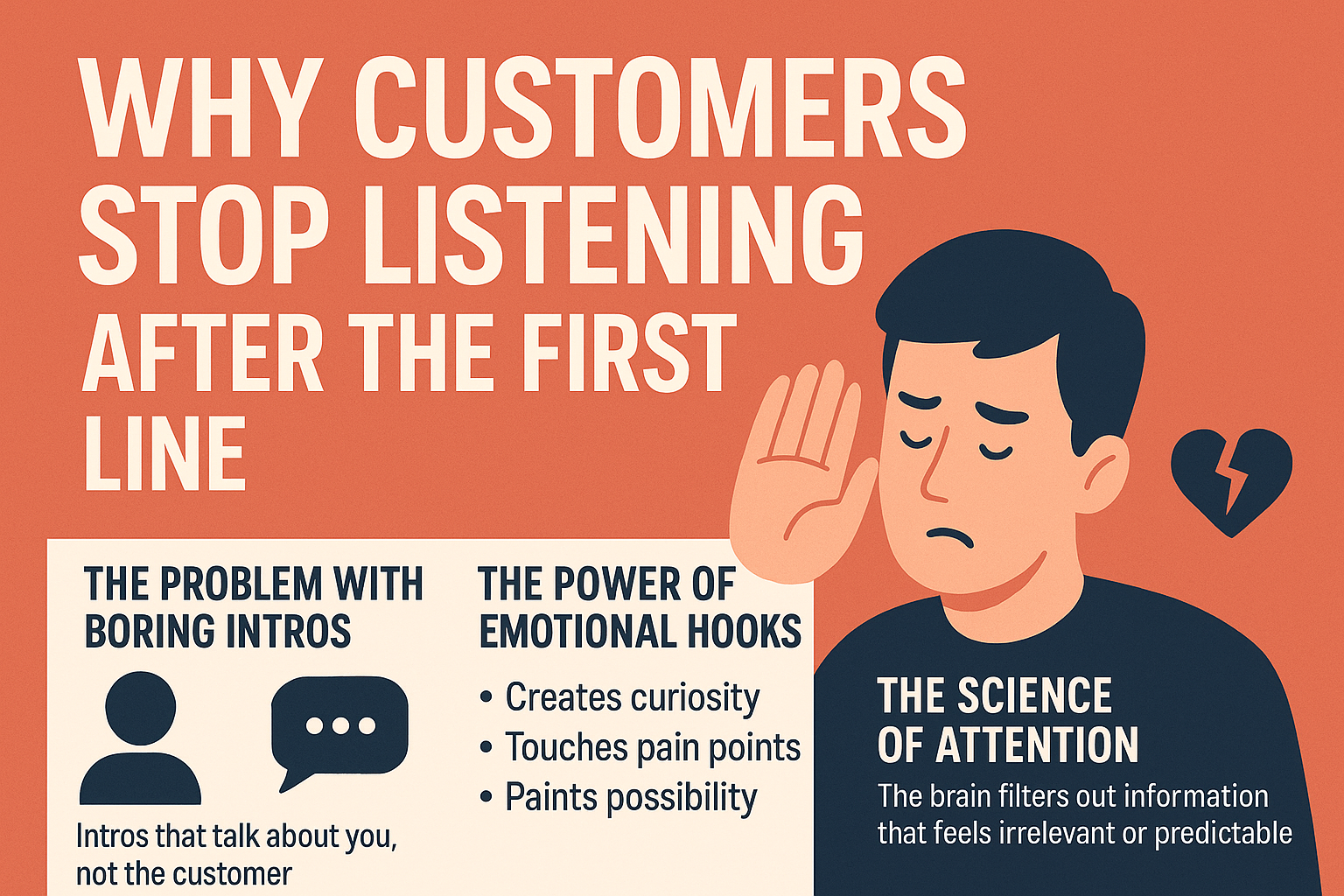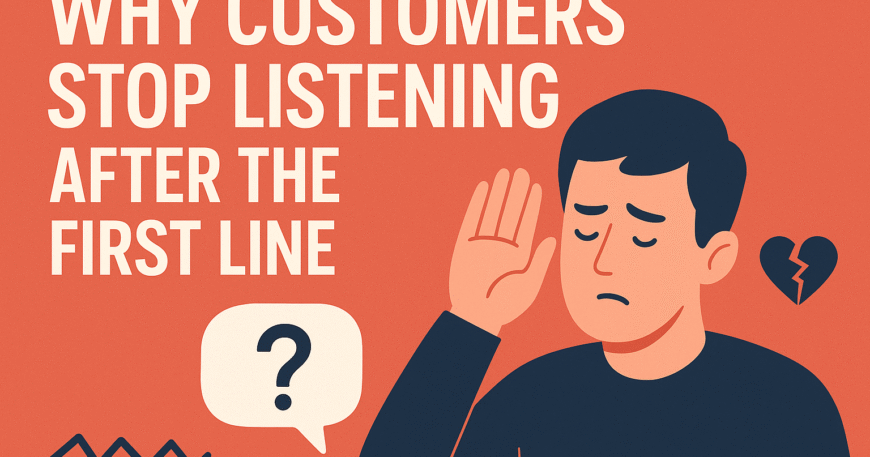Table of Contents
- Introduction
- The Problem with Boring Intros
- Why the First Line Matters Most
- The Power of Emotional Hooks
- The Science of Attention
- Common Mistakes That Kill Engagement
- Practical Examples of Winning First Lines
- How to Craft Attention-Grabbing Openings
- Turning Intros Into Conversations
- Conclusion
Introduction
Imagine this: you’ve spent hours crafting the perfect pitch, email, or ad. You hit send—or speak your first sentence—and suddenly, silence. Your customer’s eyes glaze over, or worse, they move on before you’ve even finished your opening. This happens more often than we realize. The truth? Most customers stop listening after the very first line.
But why? The answer lies in how we start. Boring intros kill curiosity, while emotional hooks make people lean in. Let’s break down why this happens and how you can fix it.
The Problem with Boring Intros
Most businesses start with safe, predictable lines:
- “We are the leading provider of…”
- “Our company has been serving clients since…”
- “I’d like to introduce you to our services…”
The issue? These intros talk about you, not the customer. They don’t spark curiosity, they don’t make the audience feel anything, and they don’t answer the question customers subconsciously ask: “Why should I care?”
Why the First Line Matters Most
The first line is your make-or-break moment. It determines whether your audience gives you 30 more seconds—or tunes out instantly. In today’s fast-paced world, attention spans are short. Customers decide almost immediately whether what you’re saying is worth their time.
Think of your first line as the doorway. If the entrance looks dull, no one will step inside.
The Power of Emotional Hooks
To win attention, you need to hook emotions, not just present facts. Emotions drive action, and a strong hook works because it:
- Creates curiosity (“What happens next?”)
- Touches pain points (“Yes, that’s my problem!”)
- Paints possibility (“Imagine if this was easier…”)
For example:
- Instead of: “We provide cloud migration services.”
- Try: “Every year, businesses lose millions in downtime—what if you could cut that to zero?”
The second line makes your audience lean in.

The Science of Attention
Attention is a limited resource. Neuroscience shows that our brains are wired to filter out information that feels irrelevant or predictable. That’s why generic openings fade into the background. To break through, you need to trigger the brain’s “alert system” with novelty, emotion, or surprise. This is what makes customers stop scrolling and start paying attention.
Common Mistakes That Kill Engagement
Many businesses lose their audience in the first line because they:
- Lead with jargon customers don’t understand.
- Overwhelm with too many details too soon.
- Focus on themselves instead of the customer’s pain points.
- Use clichés customers have heard a thousand times before.
Avoiding these traps is as important as mastering hooks. Sometimes what you don’t say matters just as much as what you do.
Practical Examples of Winning First Lines
To make this actionable, here are examples of strong openers you can adapt:
- Problem-driven: “Every minute your system is down, you’re losing money.”
- Vision-focused: “What if hiring the right person took weeks instead of months?”
- Emotion-led: “Frustrated with vendors who promise but never deliver?”
- Curiosity-based: “There’s one simple mistake costing businesses like yours thousands every month.”
These work because they’re short, clear, and immediately relevant.
How to Craft Attention-Grabbing Openings
Here are a few proven techniques to keep customers listening:
- Start with a problem they feel: “You’re losing money every time your team waits for approvals.”
- Ask a thought-provoking question: “What would you do with 10 extra hours in your workweek?”
- Use an unexpected fact or stat: “Did you know 70% of customers stop reading after the first line of an email?”
- Tell a quick story: “Last week, a client came to us frustrated after losing 3 major deals. By the end of the month, their pipeline had doubled.”
Turning Intros Into Conversations
The best first lines don’t just grab attention—they open doors to conversations. When customers feel like you understand them from the very beginning, they’re far more likely to keep listening, engage, and eventually buy.
So instead of starting with “we,” start with “you.” Instead of leading with credentials, lead with empathy.
Conclusion
Customers don’t stop listening because they’re uninterested in solutions—they stop listening because the opening doesn’t make them feel something. A boring intro slams the door shut, while an emotional hook invites them in.
Next time you pitch, email, or post online, remember: your first line decides everything. Make it about your customer, make it emotional, and make it impossible to ignore.




